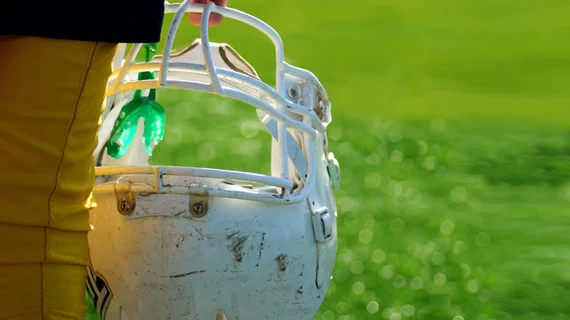A recent study found signs of injury to white matter—tied to brain shrinkage and cardiovascular issues—were visible at higher rates than average for older men who had a history of playing tackle football. These pots of white matter seen on brain scans, called "white matter hyperintensities," can be markers for dementia, and both college and professional players seem to have them more often. The findings are published in Neurology. [1]
"Studies have shown that athletes exposed to repetitive head impacts can have increased white matter hyperintensity burden in their brains," Michale Alosco, PhD, of Boston University and senior author of the study, said in a statement. "White matter hyperintensities are easily seen on MRI as markers of injury of various causes. We know these markers are more common as people age and with medical conditions such as high blood pressure, but these results [from our study] provide initial insight that they may be related to multiple aspects of brain damage from repetitive head impacts."
Monitoring the levels of white matter hyperintensities in brain MRI examinations holds potential for assessing the enduring consequences of repetitive head impacts, Alosco and the other researchers wrote. They further explained that such repetitive head impacts have associations with chronic traumatic encephalopathy (CTE), a neurodegenerative condition leading to dementia.
The study comprised 120 ex-professional football players and 60 former college football players with an average age of 57, all male. This group was subsequently contrasted with a cohort of 60 men (average age of 59) all of whom were not football players, nor did they have any record of repetitive head impact or concussions. All participants in the study underwent brain MRI and lumbar punctures to detect potential biomarkers associated with neurodegenerative disease and white matter alterations.
Among ex-football players, an elevated level of white matter hyperintensities was associated with increased vascular risk factors, heightened concentrations of p-tau proteins associated with Alzheimer's disease, CTE, and other neurodegenerative conditions, greater brain shrinkage, and a decline in the health of white matter pathways in the brain.
In the cohort of former players, the correlation between white matter hyperintensities and stroke risk was 11 times more pronounced than in the group who didn’t play. When measuring white matter for signs of integrity, nonplayers also scored four times higher.
It's important to note that the study does not establish a causal relationship between repetitive head impact, white matter hyperintensities, and other brain changes; it only demonstrates an association. While both study groups were controlled to ensure they had no symptoms of dementia, other factors may be in play.
“While our research previously showed that former football players still have elevated white matter hyperintensity burden after controlling for sleep apnea, alcohol use and high cholesterol, it is still important to consider working on modifying these risk factors due to their effects on cognitive problems and other symptoms,” Alosco said.
The full study can be found at the link below.

